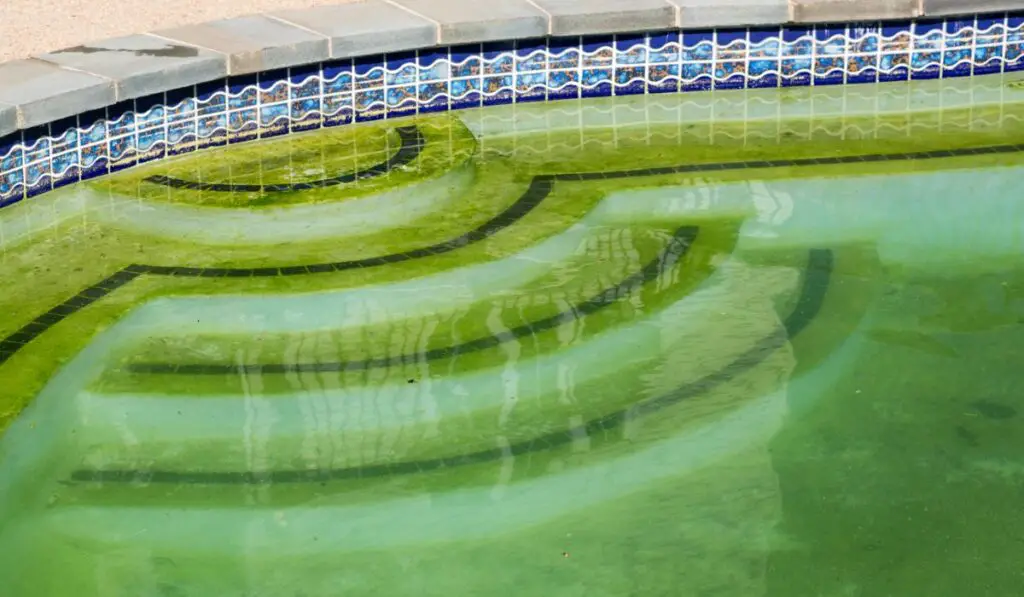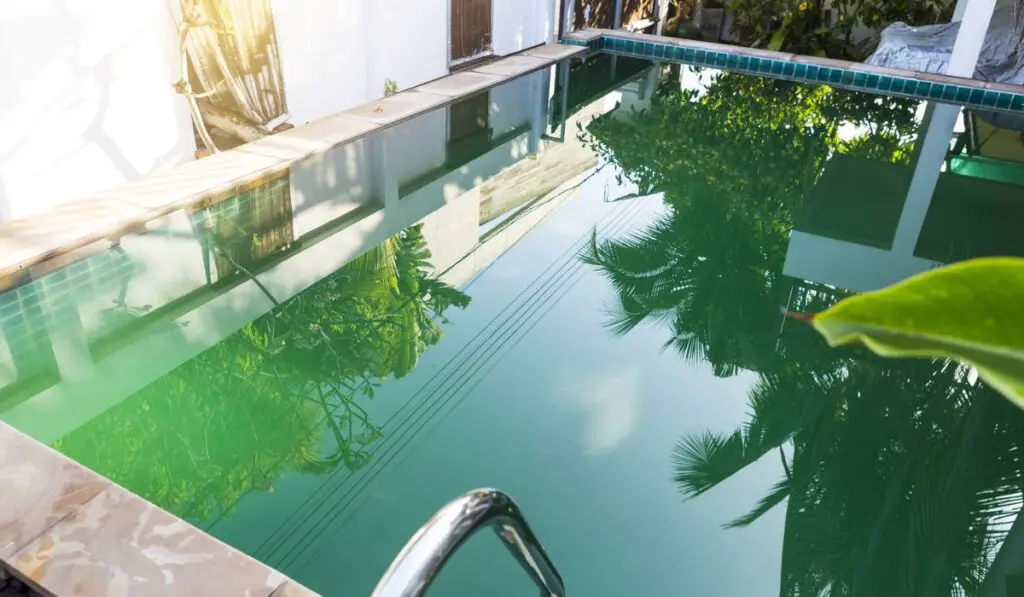Owning a pool requires a lot of work. From removing leaves from the surface to balancing the chemicals in the water, it can sometimes feel like a full-time job — and you’ll need a range of cleaning supplies on hand. But can you use household items like baking soda to help when your pool turns green?
Baking soda won’t solve the problem of a green pool. A pool turns green because of algae growth, and the water must be treated with a proper shock treatment in order to kill the algae. However, you can use baking soda to raise the alkalinity in your pool if it’s too low.
So, if you’ve got a green pool, baking soda may not be what you’re looking for. But it’s not a bad item to have around anyways. Let’s take a closer look at why your pool turned green as well as the proper solution for returning it to normal.
Will Baking Soda Clear a Green Pool?

Baking soda is a useful material when it comes to pool maintenance and balancing pool chemicals. Unfortunately, however, it won’t clear a green pool.
Your pool most likely turned green due to algae growth. The only way to clear a green pool is to kill the algae, which requires a chlorine shock treatment.
What baking soda can do, however, is help clear a pool that has become cloudy based on normal use. Baking soda is an essential chemical that can be used to help raise the alkalinity of your pool, but if you have a green pool, chances are your alkalinity is already off and will need to be adjusted with more than baking soda.
If you’ve found your pool just slightly cloudy, however, you can add a little baking soda to help the water become more clear.
How to Clean a Green Pool
As we mentioned above, you can’t clear a green pool with baking soda. But you can use it as an essential step in the process of clearing your green pool properly using chlorine shock treatment.
What You’ll Need
- Pool brush (on Amazon) (or algae brush if you have a cement pool)
- Telescopic pole (on Amazon)
- Pool test strips (on Amazon) or test kit (on Amazon)
- Baking soda (as needed)
- Pool shock treatment (on Amazon) (2-3 bags or more depending on pool size)
- Pool clarifier (optional)
The Process
Step 1: Brush Off the Algae
Take your pool brush and attach it to your telescopic pole. Use it to scrub the bottom and sides of your pool to detach the algae. For those with a cement pool, it’s recommended to use an algae brush.
Step 2: Test the Water
Use your test strips or pool test kit to test the pool water. You want the pH to be between 7.4 and 7.6 and the alkalinity to be between 100 and 150 ppm. If the alkalinity is too low, that’s when you can add the baking soda to raise the alkalinity of the pool.
If your alkalinity is too high, you’ll need to adjust the other chemicals in your pool to bring them down. The pH will come down as the alkalinity comes down. Don’t add baking soda if your alkaline levels are too high.
Step 3: Add Shock Treatment
Dump the entire contents of two bags of shock treatment into your pool. If your pool is large or dark green, a third bag may be needed.
Step 4: Wait 8 Hours
Allow your pool filter to run for 8 hours. If your pool is still green after the 8 hours have passed, then you will need to repeat step 3 a second time with the same amount of shock treatment (or more).
Step 5: Add Clarifier
Once your water is no longer green, it will likely be cloudy. You can add a pool clarifier to your pool to clear up this cloudiness.
Step 6: Test the Water
When your pool water is once again clear blue, it’s time to test the water a second time. Depending on your results, you may need to add additional chemicals to balance out the water. Once it’s balanced, you can grab your suit and head for a swim!
What Causes a Pool to Turn Green?

Pools turn green because algae has begun to grow in the water. There are three different stages of algae growth.
The first stage turns your pool water from light blue to teal. While this isn’t very serious, you should take the time to do a shock treatment before it gets worse.
The second stage is when your pool water turns lime green. In this stage, the growth has taken hold, and you should do a shock treatment before you swim in the pool again.
The final stage of pool algae is when your pool has turned dark green. Algae are growing rampant in this stage, and you’re in need of shock treatment immediately.
No matter which stage your algae growth is at, it’s important to understand that algae growth occurs because of a misbalance in pool chemicals. You should resolve to test your pool water every day to keep the chemicals in balance.
Is Green Pool Water Dangerous?
Pool algae can play host to a number of different bacteria like e.coli. These bacteria can make those who swim in the water very ill.
Because you can get ill from swimming in a green pool, it’s not considered safe to do so. If you find your pool has become green, you need to take the time to shock it before using it again.
Final Thoughts
At the end of the day, baking soda, unfortunately, doesn’t do much for a green pool. All it can do is raise the alkalinity enough to perform a shock treatment.
Therefore, if you have come outside to find a green pool, it’s important to perform the proper steps for using a pool shock treatment to return your pool to its blue color.
